Because of the steady flow of astounding banknote submissions received from our loyal, valued collector and dealer base, every day in the PCGS Banknote grading room possesses the potential to surprise and delight. That is just one of the employment benefits enjoyed by our banknote staff, composed of team members who are truly enthusiastic about and grateful for the cherished numismatic collectibles with which they are entrusted to handle daily.
The day that the subject of this issue’s Noteworthy Notes column reached the grading stations was a particularly gratifying one for the team. This 1929 $5 Type 2 National Bank Note from Dallas National Bank with serial number 1 – certified and graded as Choice Uncirculated 64PPQ (Premium Paper Quality) – certainly surprised and delighted.
Assessing a National Bank Note’s desirability, as well as determining its estimated value ahead of an actual free-market transaction (which always has the ultimate say) can be a challenging, inexact science involving multiple factors of nebulous exactitude. The issuing bank’s location (both town and state), scarcity, type and variety, other prestige-elevating factors such as a low serial number or printer error status, and finally condition all combine to form its appeal profile. This specific National Bank Note ranks pretty highly among all of these considerations.
Let’s start with the matter of geography. Very generally, the more obscure the town, the scarcer a banknote is expected to be, although banknotes from larger, more prominent cities (but from smaller banks within them) can be scarce as well. And while scarcity doesn’t always translate directly into value, as certain geographies are simply more popular and heavily collected than others, it can be a solid initial indicator of a precious banknote. At first glance, this banknote’s issuing financial institution appears to have been in one of the nation’s largest and best-known major metropolises – the “Big D,” otherwise known as Dallas, Texas. But a careful reading of the fine print of the note at center left will quickly reveal otherwise: this is Dallas, Oregon – not Dallas, Texas!
The state of Oregon is considered to be a “better” state for Nationals, being in the latter half of the 1800s U.S. westward expansion endeavors and maintaining a population of under one million throughout the National Bank Note era. Compared to the geriatric Pennsylvania, for example, the nascent Oregon hardly had the population, infrastructure, and investment support to justify larger print runs of circulating banknotes. Dallas was located 15 miles west of Salem, occupying fewer than five square miles in footprint and maintaining less than a 3,000-person population when this banknote was printed. So, it required just a tiny fraction of the statewide totals.
This isn’t just any Dallas, Oregon, National either. Out of the 474 Type 2 $5 notes printed, this was the very first, demonstrated by the brown ink overprinted serial numbers at lower left and upper right, which proudly exhibit “A000001” as the prima facie evidence. Additionally, the Type 2 variety – identifiable by the busier overprint configuration of serial plus charter number in tandem at both ends – adds another dimension of desirability. Unlike Type 1 Nationals that can have up to six serial number 1s available to collectors (all six subjects on firstly printed sheets of Type 1s sport the number 1, differentiated only by their letter prefixes A through F), the Type 2 variety saw only one serial number 1 on that premier sheet, with its sheet mates getting the less-impressive numbers 2 through 6. According to the current National Currency Foundation census statistics, the ratio of available Type 1 to Type 2 serial number 1s is – unsurprisingly – around 5:1 (5,344 to 1,089), just about the proportion that we would expect based on said variance in production protocol.
The final noble attribute involves its grade. This bona fide blazer is super gemmy in every way but for its tighter right margin, a victim of the BEP down-the-middle cut job of the initially printed sheet of 12. Born of the left-side vertical panel of six, the right-side subjects were granted a little more of the margin meat. But who in their right mind would care about that?
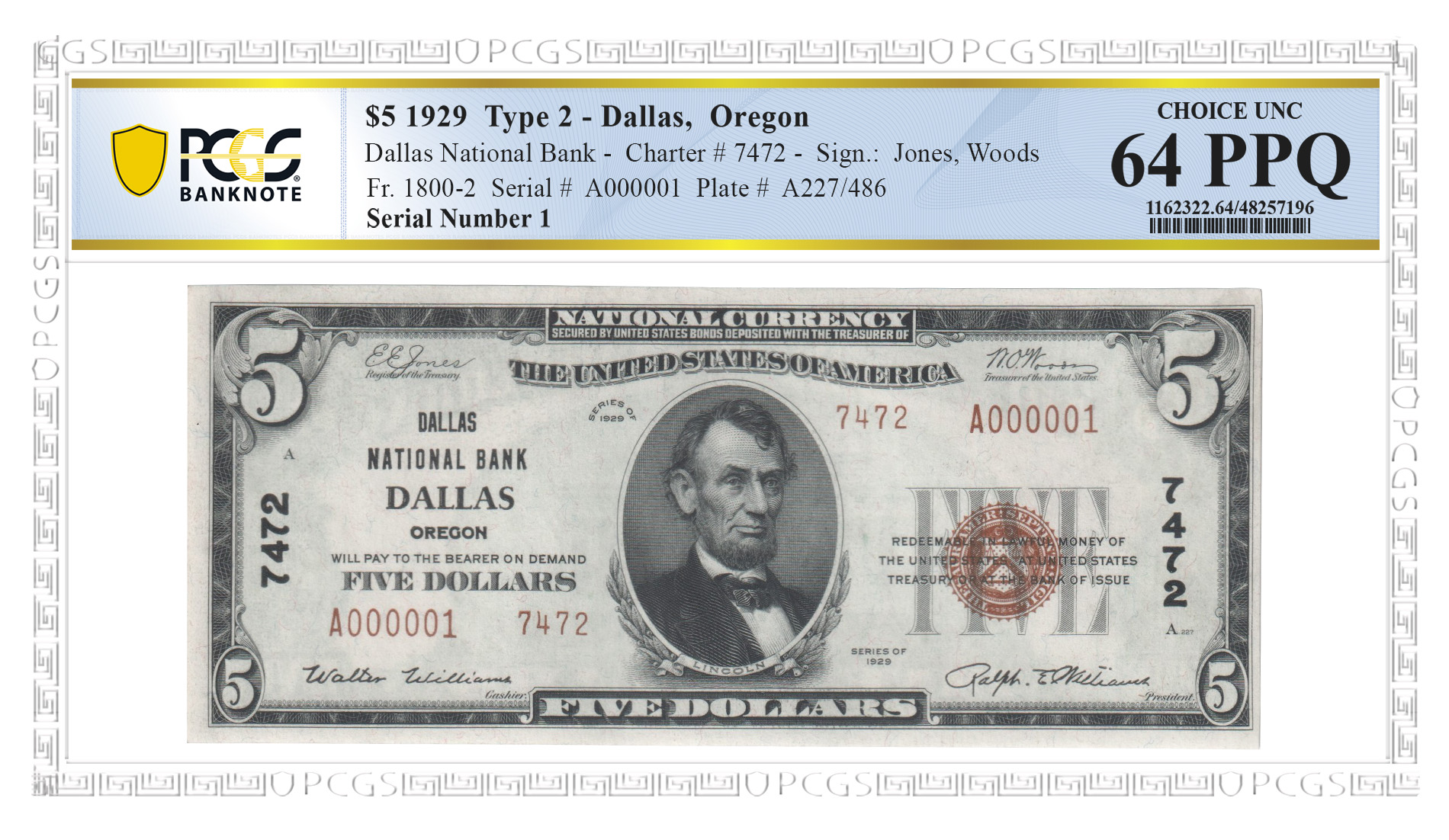
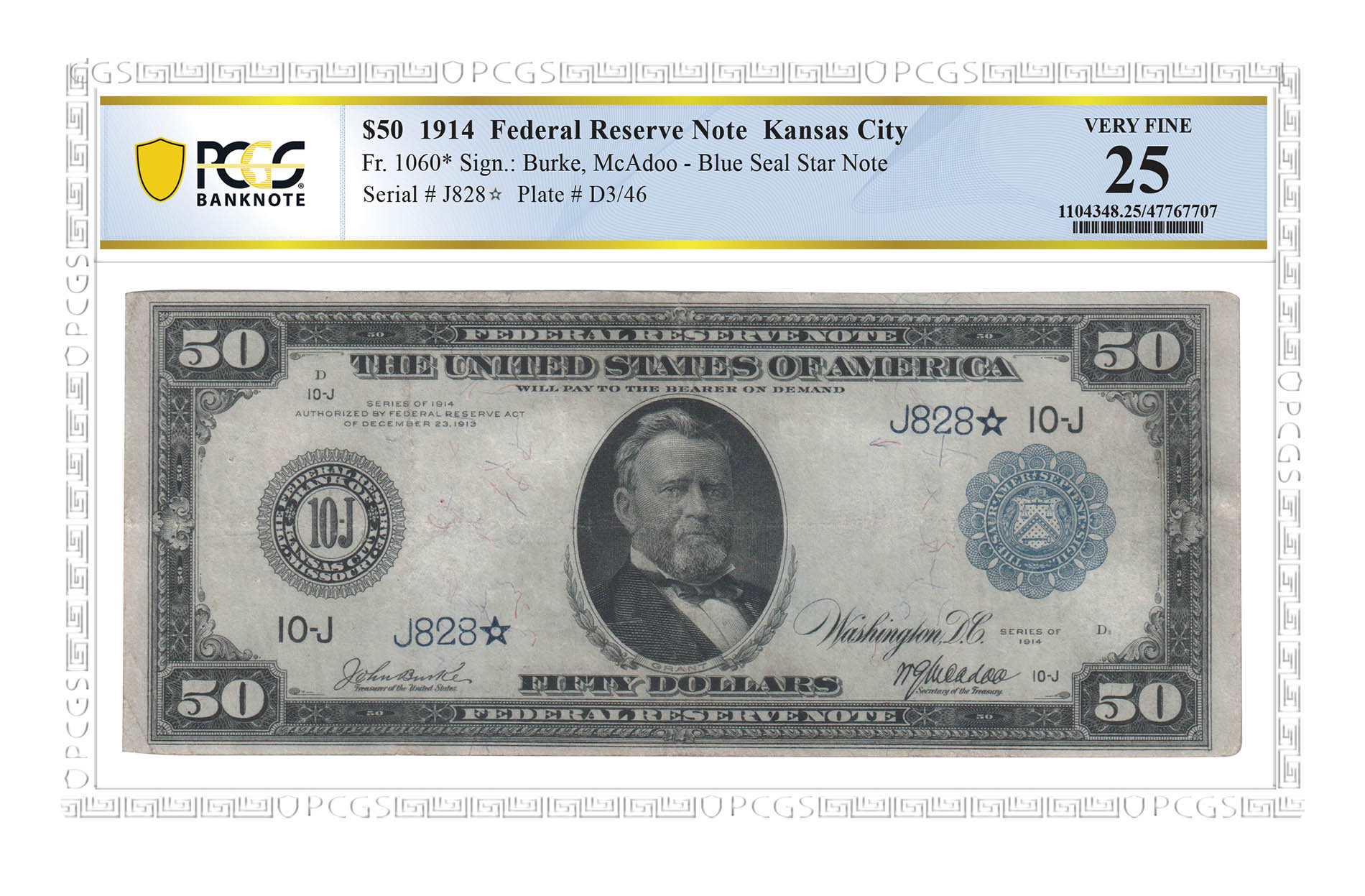
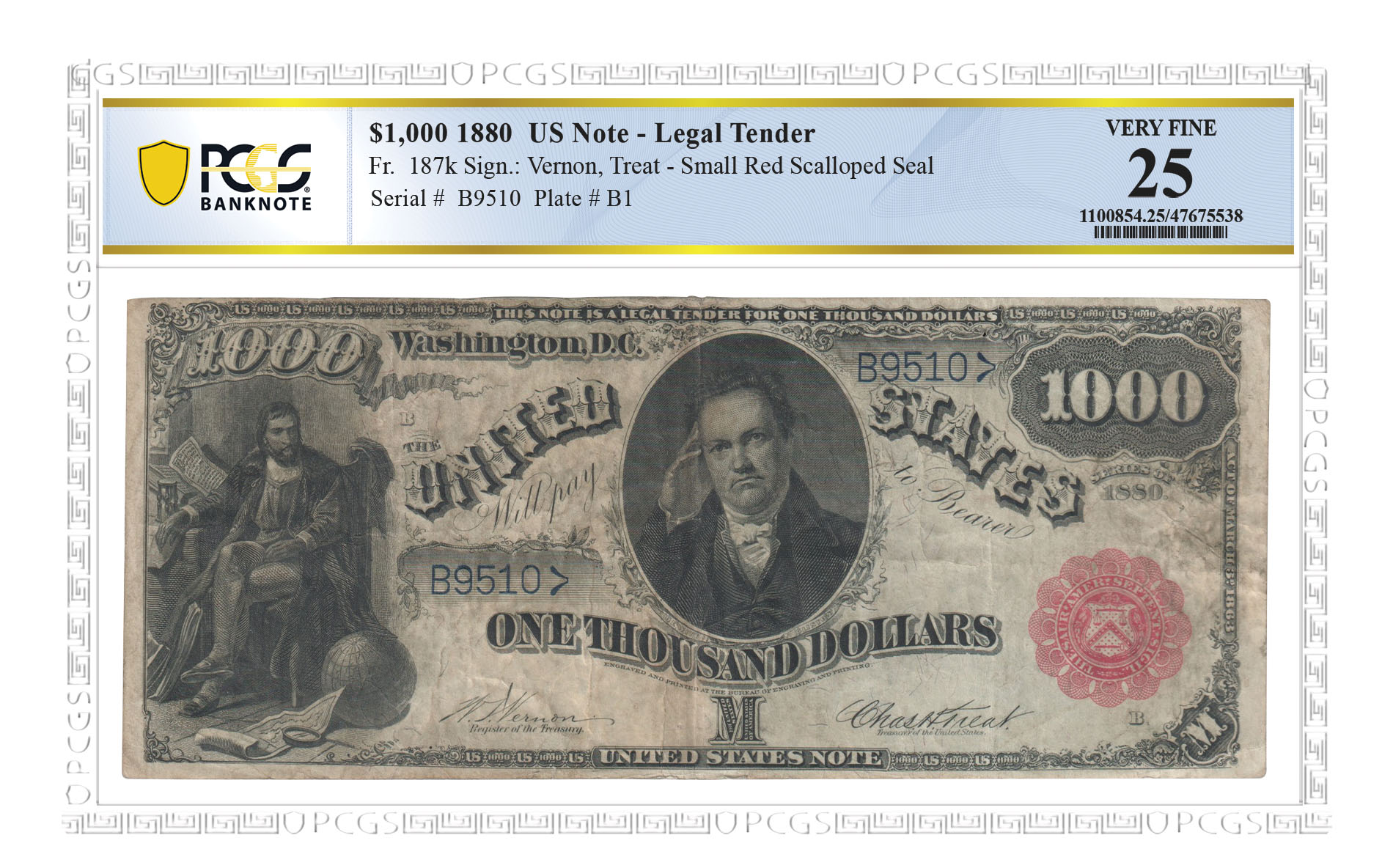

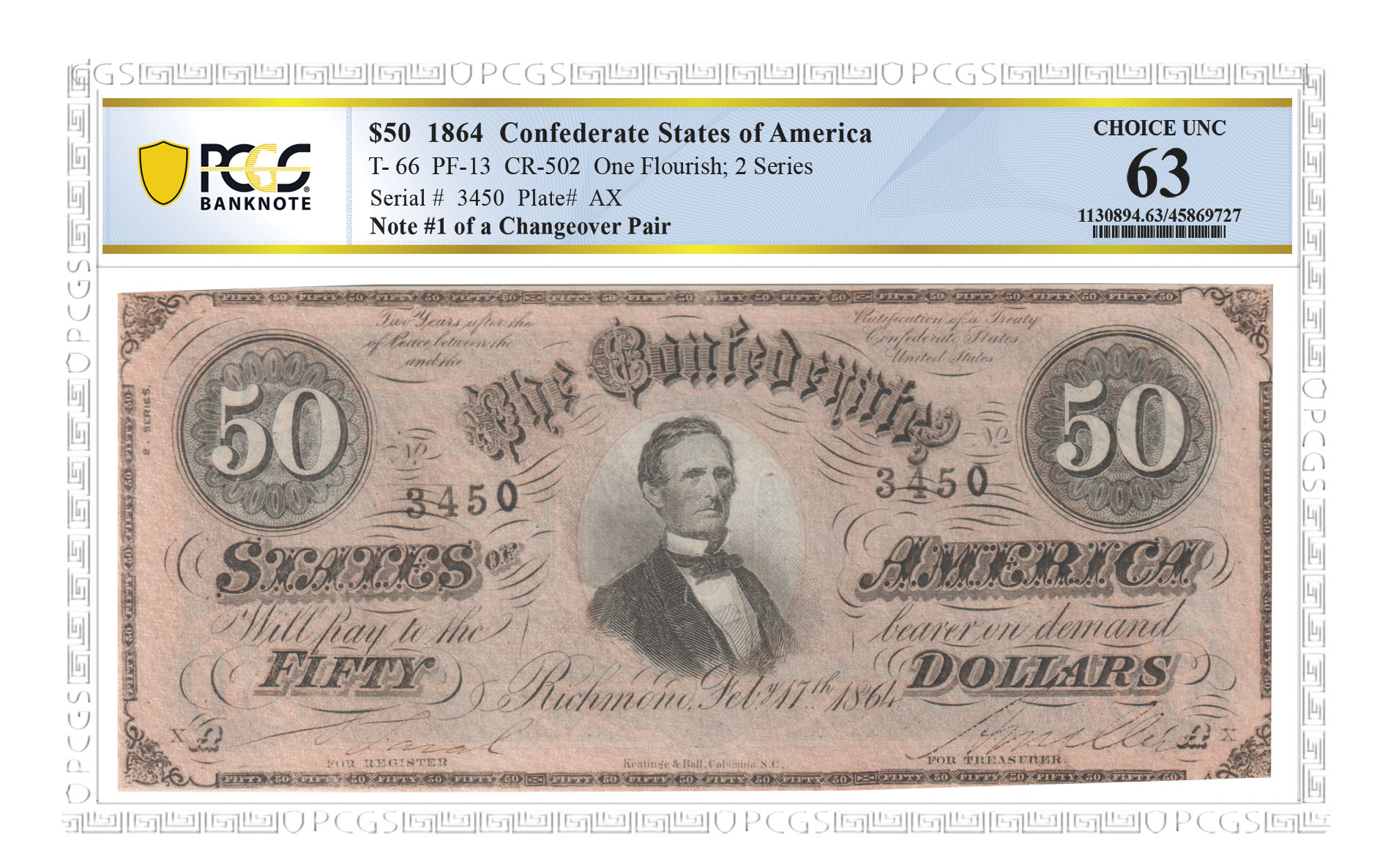
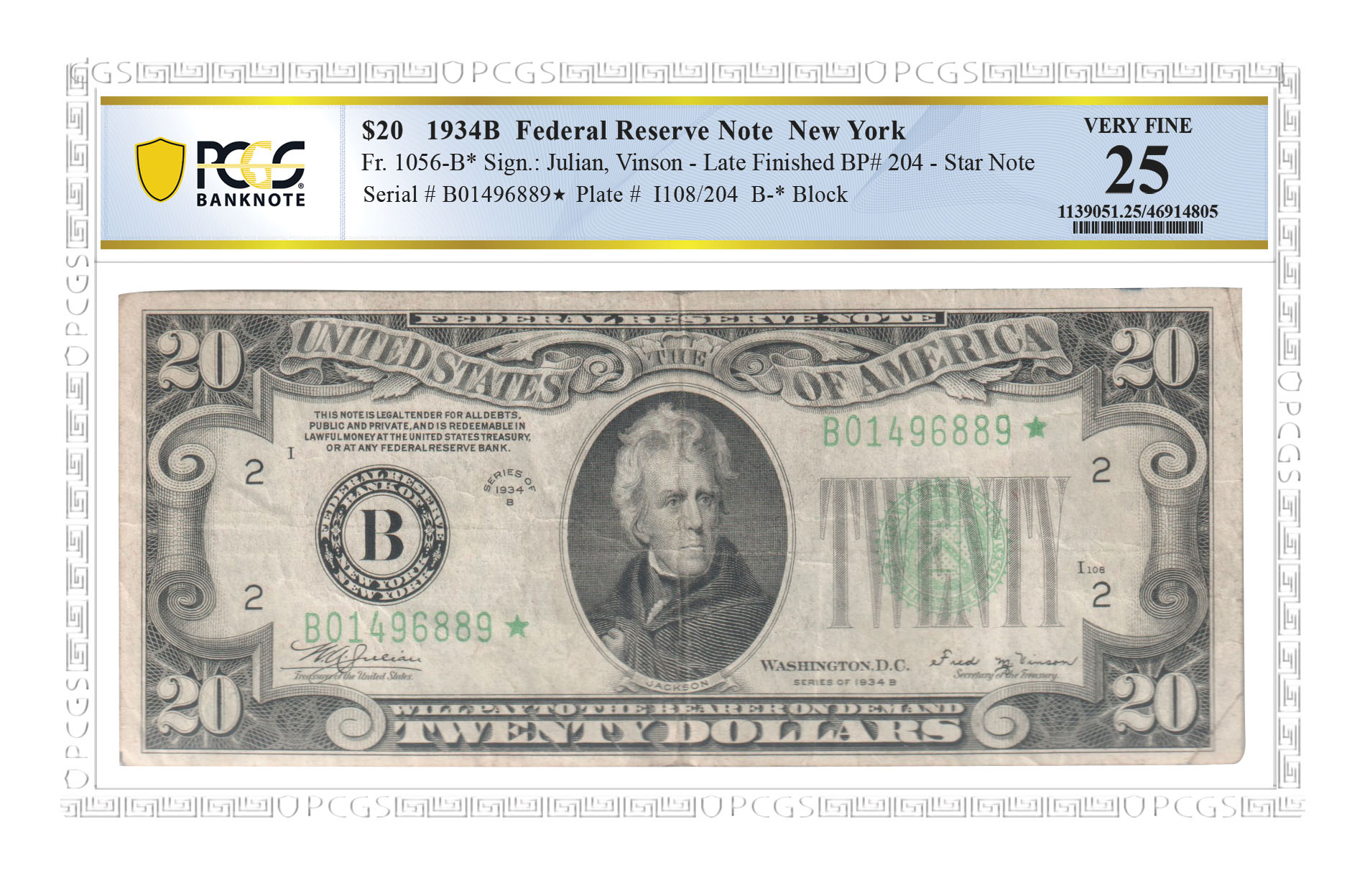

 Copper & Nickel
Copper & Nickel
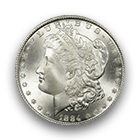 Silver Coins
Silver Coins
 Gold Coins
Gold Coins
 Commemoratives
Commemoratives
 Others
Others
 Bullion
Bullion
 World
World
 Coin Market
Coin Market
 Auctions
Auctions
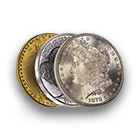 Coin Collecting
Coin Collecting
 PCGS News
PCGS News